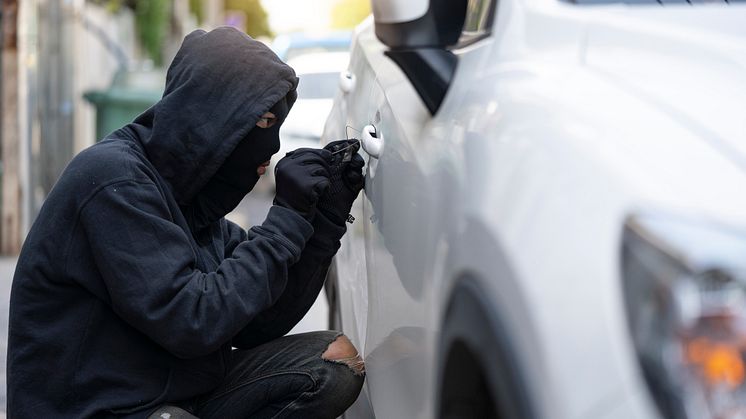
Press release -
Thefts of vehicles rise by more than 50% to hit highest level in four years
More than 150,000 motor vehicles were stolen in Great Britain in the year 2018-19, 10,000 more than the year before and a 56% (54,932) increase compared to four years earlier, according to data analysed by RAC Insurance.*
Almost all police forces that responded to a Freedom of Information request recorded an increase in the numbers of vehicles stolen in their force areas from 2014-15 and 2018-19, with some stark differences across the country. The largest increases in terms of vehicle numbers were in the Metropolitan Police (up 9,635 to 30,773 thefts, a 46% increase) and West Midlands (up 5,677 to 10,372 thefts, a 121% increase) force areas.
Six forces recorded a more than doubling in the number of vehicles stolen between 2014-15 and 2018-19, with the biggest jumps in Suffolk (up 172% from 347 to 945 thefts), Surrey (up 133% from 661 to 1,543 thefts) and the West Midlands.
Only Lincolnshire, the City of London and Police Scotland recorded a reduction in thefts over this period however, with reductions of 28, 29 and 473 thefts respectively.
Year-on-year comparisons (2017-18 to 2018-19)
Most police forces (32) also recorded a rise in vehicle thefts year-on-year, between 2017-18 and 2018-19. Essex saw the largest rise as well as the largest number of overall vehicles stolen in 2018-19 (up 1,056 to 5,409 thefts, 24% more than in 2017-18) followed by the West Midlands (up 836 to 10,372 thefts, 9% more than 2017-18).
When looking at the biggest percentage increases over this 12 month period, Suffolk witnessed the highest jump with 44% more thefts (945 in 2018-19 compared to 655 a year earlier), followed by Bedfordshire (37% increase, from 1,056 to 1,445 thefts) and North Wales (32% increase, from 464 to 612 thefts).
RAC Insurance spokesperson Simon Williams said:
“These figures paint a rather disturbing picture – vehicle thefts are on the rise almost everywhere, and in some parts of the country numbers are rocketing. It’s also not the case that the rises in crime are confined to a few larger urban areas, with many police forces covering more rural areas also seeing big increases.
“While vehicle crime is at far lower levels today than it was in the early 1990s, thanks to improvements in vehicle security, and the number of vehicles licensed to be driven on the UK’s roads is higher than at any point in the past,** it’s still concerning that so many more vehicles are being stolen than just a few years ago. One crumb of comfort from the data however is that the increases might be starting to plateau, and it will be interesting to discover just what effect the coronavirus lockdown has on vehicle thefts when the data becomes available.
“Some of the increases in recent years can be put down to a rise in thefts of vehicles that are easier to steal, such as motorbikes and mopeds that are less likely to have immobilisers. Government data also shows that thieves generally use keys to access vehicles in around half of crimes, which suggests perhaps some drivers could do more to keep their keys safe. And in an estimated fifth of cases (18% in 2018), thieves were able to access cars because one or more cars weren’t locked in the first place.
“Based on these figures, it’s vital drivers take steps to protect themselves and avoid being an easy target. Three of the biggest factors that determine whether a car is stolen or not come down to how it’s secured, where it’s kept and the time of day. Criminals appear to prefer stealing vehicles at night, with those parked at owners’ homes, presumably where there is easier access to a key, also being favoured.
“While organised criminal gangs are responsible for a large proportion of crime, thieves will also be opportunistic in nature so the more a driver can do to make their car a less likely target the better. It’s also critical motorists buy quality motor insurance policies that will cover them in case the worst happens. A strong, comprehensive policy can go a long way towards giving peace of mind in the event a vehicle is stolen.”
Addendum: since publication, we were informed that the data provided by Kent Police and included as part of the original press release was incorrect. This release has been updated to take account of the new figures.
Lessen the chances of your car being stolen
RAC Insurance offers drivers this advice:
- Don’t make your car an easy target. Always lock your car securely when you leave it, even for a short time. Ensure all doors, windows and any roof opening (sunroof or hood) are locked, and keep your keys with you. Consider buying a steering wheel lock for extra (visible) security. This can make it easier for a would-be thief to pass over your vehicle. It’s also a good idea to keep the car’s logbook secure at home, rather than in the car
- Find the right place to park. Most vehicle-related theft takes place at night. When away from home, park in locations that are well-lit and open to public view – car parks that have security patrols and are covered by CCTV can be safer, and it’s also a good idea to look for the ParkMark logo at car parks that have met that certain security standards
- Double-check your car is locked when you leave it. Make sure you see and hear your car locking before you leave it – look for the tell-tale flashing indicators and click of the locks engaging
- Does your car use a keyless entry/start fob? Avoid being a ‘relay attack’ victim. Thieves can use a technique to copy the key signal to another device that’s placed close to a vehicle. This can fool the car into thinking the genuine key is present and can mean a thief can drive away in the car. If you have a keyless car fob, always keep it well away from doors and windows in your house. Keeping it in a metal (Faraday) box or signal blocking wallet can stop thieves copying the signal
- Consider security when you next change your vehicle. If you are buying a car on the second-hand market make sure it has an immobiliser and, ideally, a Thatcham-certified alarm. You can also use Thatcham Research’s Consumer Security Ratings to help work out how secure certain models are
- In winter: Icy morning? Don’t leave your car while it’s defrosting. The majority of vehicle thefts take place at vehicle owner’s home. Always stay in your vehicle while the car is warming up and demisting the windscreen – if you leave it, there’s a risk someone could get behind the wheel before you do
For more advice, check the RAC guide to car security.
Topics
Categories
Notes to Editors
* Freedom of Information request made to all UK police forces in November 2019, apart from PSNI. Forces were asked to provide figures for the number of reported thefts of motor vehicles. The following forces were unable to respond to the request: Gloucestershire, Norfolk
** Department for Transport vehicle licensing statistics, table VEH0105, shows there are 39.4m licensed vehicles in the UK as of April 2019: www.gov.uk/government/statistical-data-sets/all-vehicles-veh01
The press office email address is press.enquiries@rac.co.uk. Please note: the press office is unable to help with individual customer enquiries - please visit the RAC contacts page to find the right contact.
ISDN radio studio facilities are available for interviews Monday to Friday.
About the RAC
The RAC provides complete peace of mind to 12m UK private and business drivers, whatever their motoring needs. Its services include:
- Breakdown assistance. Its highly-skilled, 1,600-strong branded patrol workforce attends more than two million breakdowns every year, fixing on average four out of five vehicles at the roadside. The RAC’s patrol fleet is one of the most advanced in the UK, and was the first to roll out both an All-Wheels-Up recovery system, allowing the vast majority of vehicles to be recovered from a single patrol van, and EV Boost mobile electric vehicle charging units
- Insurance. The RAC is a top-five car insurance broker having surpassed the 500,000 policies-in-force milestone in 2018. It also offers ‘black box’ telematics policies, as well as home and travel insurance
- Other motoring services. The RAC leads in the development of new solutions for business, fleets, electric vehicles and future car technology. Its additional products and services include a personal loans offering, a used car buying website, vehicle inspections and checks, legal services or up-to-the-minute traffic and travel information. It also has a network of Approved Dealers and Approved Garages which combine the trust of RAC brand with local service and convenience
The RAC also works to support the interests of its members and UK drivers on the most important motoring issues which it identifies via the annual RAC Report on Motoring and the RAC Opinion Panel. The Report on Motoring is the longest running analysis of driver opinion in the UK having been published every year since 1989.
For more information about the RAC, visit the RAC website.

